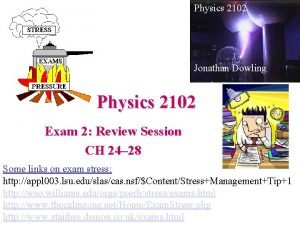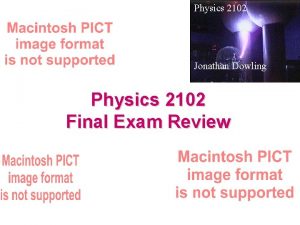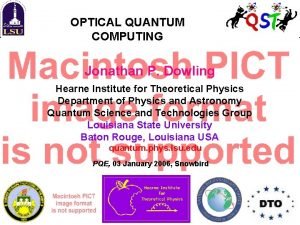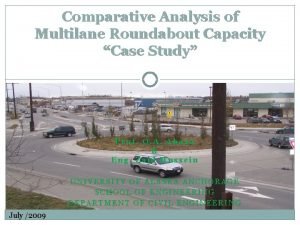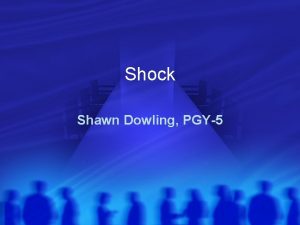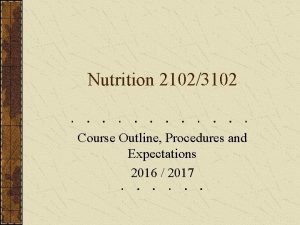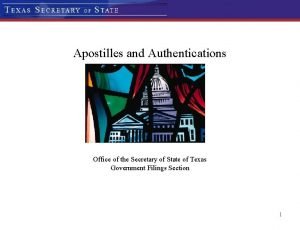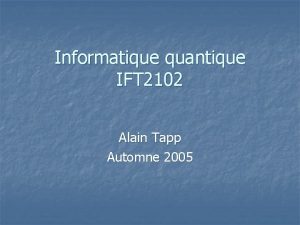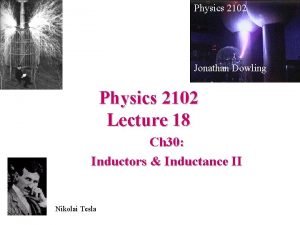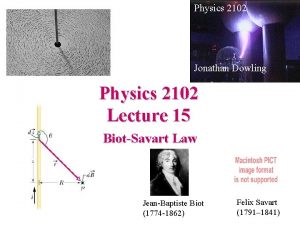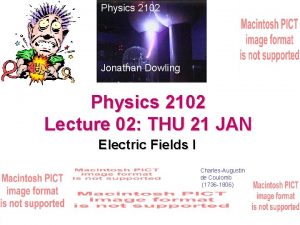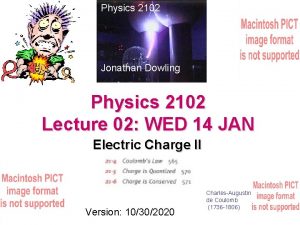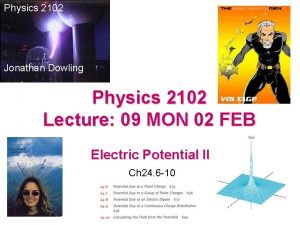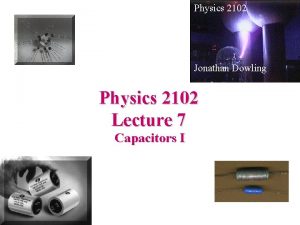Physics 2102 Jonathan Dowling Physics 2102 Lecture 16











- Slides: 11

Physics 2102 Jonathan Dowling Physics 2102 Lecture 16 Ampere’s law André Marie Ampère (1775 – 1836)

Ampere’s law: Remember Gauss’ law? Given an arbitrary closed surface, the electric flux through it is proportional to the charge enclosed by the surface. q Flux=0! q

Gauss’ law for Magnetism: No isolated magnetic poles! The magnetic flux through any closed “Gaussian surface” will be ZERO. This is one of the four “Maxwell’s equations”.

Ampere’s law: a Second Gauss’ law. i 4 The circulation of B (the integral of B scalar ds) along an imaginary closed loop is proportional to the net amount of current traversing the loop. i 2 i 3 i 1 ds Thumb rule for sign; ignore i 4 As was the case for Gauss’ law, if you have a lot of symmetry, knowing the circulation of B allows you to know B.

Sample Problem • Two square conducting loops carry currents of 5. 0 and 3. 0 A as shown in Fig. 30 -60. What’s the value of ∫B∙ds through each of the paths shown?

Ampere’s Law: Example 1 • Infinitely long straight wire with current i. • Symmetry: magnetic field consists of circular loops centered around wire. • So: choose a circular loop C - B is tangential to the loop everywhere! • Angle between B and ds = 0. (Go around loop in same direction as B field lines!) R

Ampere’s Law: Example 2 i • Infinitely long cylindrical wire of finite radius R carries a total current i with uniform current density • Compute the magnetic field at a distance r from cylinder axis for: – r < a (inside the wire) – r > a (outside the wire) r R Current into page, circular field lines

Ampere’s Law: Example 2 (cont) r For r < R Current into page, field tangent to the closed amperian loop For r>R, ienc=i, so B=m 0 i/2 p. R

Solenoids

Magnetic Field of a Magnetic Dipole A circular loop or a coil currying electrical current is a magnetic dipole, with magnetic dipole moment of magnitude m=Ni. A. Since the coil curries a current, it produces a magnetic field, that can be calculated using Biot-Savart’s law: All loops in the figure have radius r or 2 r. Which of these arrangements produce the largest magnetic field at the point indicated?

Sample Problem Calculate the magnitude and direction of the resultant force acting on the loop.
